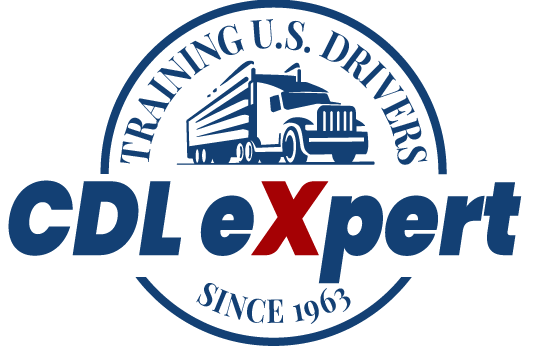
What is a CDL and Why Do You Need One?
A Commercial Driver’s License (CDL) is essential for anyone who wants to operate large vehicles such as trucks, buses, and trailers for commercial purposes. In Nevada, obtaining a CDL allows you to pursue a career in industries like trucking, public transportation, and construction, where transporting goods or passengers is a key component of the job. Whether you're interested in local delivery, driving a combination vehicle, or long-haul trucking, a CDL opens doors to numerous job opportunities with potentially high earning potential.
In addition to regular driving licenses, a CDL is specifically designed for operating commercial motor vehicles (CMVs). There are different classes of CDL—Class A, Class B, and Class C—each permitting the operation of different types of vehicles and combinations of vehicles. For more information on the different classes of Commercial Driver’s Licenses, visit our detailed blog post on the classifications of CDLs. Understanding which type of CDL you need depends on the type of vehicle and cargo you intend to handle, such as tank vehicles, hazardous materials, single vehicles, passenger vehicles, or school buses.
Requirements for Getting a CDL in Nevada
Before diving into the steps for obtaining a CDL, it’s important to understand the basic eligibility requirements:
Age Requirements: You must be at least 18 years old to apply for a CDL to drive within Nevada (intrastate). For interstate driving, you must be at least 21 years old. Age requirements also apply to specific endorsements, such as transporting hazardous materials.
Valid Driver’s License: You need a valid Nevada driver's license to apply for a CDL. This is a prerequisite before you can pursue a commercial license.
Medical Certification: A medical examination report and a Medical Examiner’s Certificate are required to ensure you meet the physical requirements to operate a commercial vehicle safely. This step helps confirm that drivers are physically fit to handle the demands of operating heavy vehicles.
Residency and Citizenship: Proof of Nevada residency and U.S. citizenship or lawful permanent residency is necessary. This ensures compliance with both state and federal regulations. For further details, check out FMCSA's official guidelines.
Driving Record: A clean driving record or Motor Vehicle Record (MVR) is essential. You can get a copy of your Nevada MVR here. You must not have had your driver’s license revoked, suspended, or canceled in any state. Maintaining a good driving record is critical for obtaining and retaining commercial driving privileges. As a CDL holder, you are considered a professional driver and are held to a higher standard, especially when driving a CMV.
Step-by-Step Process to Obtain Your CDL in Nevada
1. Study the Nevada CDL Manual: This manual contains all the information needed for the CDL knowledge test. It covers topics such as vehicle inspection, transporting cargo safely, air brake systems, and specific rules and regulations that apply to commercial vehicles. You can access the free PDF of the Nevada CDL Handbook here, there is also a CDL Handbook Supplement here, and a CDL Tip Sheet here, on the Nevada DMV website.
2. Obtain a Commercial Learner’s Permit (CLP): Before you can apply for a full CDL, you need a CLP. This involves passing a written general knowledge test based on the Nevada CDL manual, tip sheet, and CDL handbook supplement which can all be found here on the CLP page of the Nevada DMV. The only endorsements allowed on a CLP are passenger (P), school bus (S), and tanker (N). Endorsements P,S will have a (P) restriction on a CLP, and Tanker (N) endorsement will have an X restriction on a CLP. You must hold the CLP for at least 14 days before taking the skills test. The CLP allows you to practice driving with a licensed CDL holder in the passenger seat, offering real-world experience in handling different types of vehicles like single vehicles or combination vehicles.
3. Take a DOT Physical Exam:Visit a licensed medical examiner, you can find one here, to get a Department of Transportation (DOT) physical exam. This exam ensures you meet the medical standards required for a CDL and checks vision, hearing, and general physical health. If you pass, you will receive a Medical Examiner's Certification, often called a DOT card or DOT Med Card. This certification is critical for ensuring the safety of both the driver and the public. More details are available on the FMCSA Medical Program page. We also have a blog explaining the process.
4. Enroll in Online ELDT Theory and a Behind-the-Wheel CDL Training
Program: Entry-Level Driver Training (ELDT) Theory is mandatory for anyone getting a first-time CDL. It can be completed online through resources like CDL eXpert's ELDT program. This requirement also applies to those adding a first-time school bus (S), passenger (P), or HazMat (H) endorsement or upgrading from a Class B to a Class A CDL. Enrolling in a CDL training program provides hands-on experience and improves your chances of passing the CDL skills test. Training schools, such as truck driving schools in Nevada, offer essential practice in behind-the-wheel training.
5. Pass the CDL Skills Test: The skills test consists of three parts: a vehicle inspection test, a basic control skills test, and a road test. This test assesses your ability to operate a commercial vehicle safely. Practicing under the supervision of an experienced CDL driver is recommended to prepare for this test.
6. Submit Documentation and Pay Fees: Once you pass the skills test, submit your documentation to the Nevada Department of Motor Vehicles (DMV), including proof of residency, your current driver’s license, and your medical examiner’s certificate. Pay the necessary fees to receive your CDL. Fees may vary based on the class of CDL and any additional endorsements. You can check the Nevada DMV website for current fee schedules.
7. Receive Your CDL: After completing all the requirements, your CDL will be issued, allowing you to begin your career as a commercial driver. With a CDL, you can operate various commercial motor vehicles, including combination vehicles, tanker trucks, and passenger vehicles, depending on your endorsements.
CDL Endorsements and Restrictions in Nevada
CDL endorsements are additional qualifications that allow you to drive specific types of vehicles or carry certain types of cargo. Some common endorsements in Nevada include:
Hazardous Materials (H): Required for transporting hazardous materials. Drivers must pass a separate knowledge test and undergo a background check as part of federal safety regulations. If you want to know more about adding HazMat, you can take our HazMat Online Theory course, and we have a blog explaining the entire HazMat process with current fees.
Passenger (P): Necessary for driving vehicles that carry 16 passengers including the driver, such as buses. This endorsement requires both a knowledge test and a road test in a passenger vehicle.
School Bus (S): Can not have S alone must have P also. S is only for School Buses.
Tanker (N): Needed for operating vehicles that transport liquid or gaseous materials in bulk. The tanker endorsement is essential for drivers handling fuel, milk, or other liquids.
HazMat/Tanker Combination (X)
Doubles/Triples (T)
Restrictions may apply if you pass the CDL test in a vehicle without specific equipment. For instance, a restriction might prevent you from driving vehicles with air brakes if you didn't take the skills test in such a vehicle. Understanding these endorsements and restrictions is crucial for complying with state and federal regulations and maximizing job opportunities in commercial driving.
Preparing for the CDL Knowledge Test and Road Skills Test
Study the CDL Manual: Focus on sections that relate to the class of CDL you are pursuing, as well as any endorsements you need. The Nevada CDL manual is your primary resource for learning about state-specific regulations and safe driving practices.
Take Practice Tests: Use online resources to take CDL practice tests. These tests simulate the format and types of questions you will encounter on the actual knowledge test. Regular practice can help you identify areas where you need further study and ensure you meet the knowledge requirements.
Practice Driving: If you have a CLP, practice driving with a licensed CDL driver in the appropriate class of vehicle. This hands-on experience is invaluable for learning how to maneuver large vehicles and handle different road conditions.
Understand the Test Format: The CDL knowledge test is a written exam that covers various topics related to commercial driving, you already passed this to get your CLP. The Skills and Road tests includes a pre-trip vehicle inspection, parking, basic vehicle control, and a road test.
Frequently Asked Questions About Getting a CDL in Nevada
How much does it cost to get a CDL in Nevada? The cost varies, but you can expect to pay around $58 for the CDL skills test, $112.25 for the CDL license fee, and additional costs for any endorsements. Other costs may include fees for medical exams and training programs.
How long does it take to get a CDL in Nevada? The process can take several weeks to a few months, depending on how quickly you pass the required tests and complete training if you choose to enroll. Holding the CLP for a minimum of 14 days is required before taking the skills test.
Is CDL training mandatory in Nevada? CDL training is not mandatory, but it is highly recommended to improve your chances of passing the CDL tests and becoming a safe, competent driver. Training provides practical experience and knowledge that is invaluable for new drivers. Entry-Level Driver Training is mandatory. CDL eXpert provides best-in-class training at affordable prices online so you can learn at your own pace, learn more here.
Can I transfer my CDL from another state to Nevada? Yes, you can transfer an out-of-state CDL to Nevada. You will need to provide proof of your CDL, pass a vision test, and meet the residency requirements. Transferring your CDL requires a visit to a Nevada DMV office with the necessary documentation.
What happens if I fail the CDL test? If you fail any part of the CDL test, you can retake it. Nevada allows you to take the test three times within a year before requiring you to pay the fees again. Preparing thoroughly using the CDL manual and practice tests can help you avoid retaking the test multiple times.
Conclusion
Obtaining a CDL in Nevada is a straightforward process, but it requires careful preparation and understanding of the requirements. By following the steps outlined in this guide and utilizing available resources such as the Nevada CDL manual and practice tests, you can successfully obtain your CDL and embark on a rewarding career in commercial driving.
Whether you aim to drive locally or across state lines, a CDL opens up various opportunities for stable employment and growth in the transportation industry. A career as a commercial driver offers flexibility, job security, and the potential for high earnings, making it an attractive option for many individuals.
